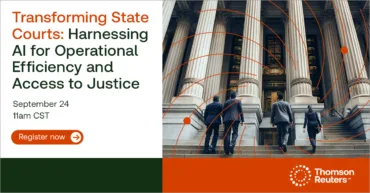Getting your government health program enrollees up to date requires powerful data hygiene.
Are you involved in managing the Medicaid programs for your state? Then you’re facing what could be the biggest healthcare event since the passage of the Affordable Care Act (ACA).
When is the public health emergency end date?
Sometime in 2023, the public health emergency (PHE) the federal government declared in response to the Covid-19 pandemic in 2020 is expected to end. State Medicaid overseers will need to re-determine eligibility for nearly all enrollees in these programs.
The PHE’s end date has been postponed a few times—the most recently announced date is May 11. When the date is set in stone, the U.S. Department of Health and Human Services (HHS) will give the public 60 days’ notice.
This means that the time for you and your team to start preparing for the PHE’s end is right now, even if the date is delayed again. And that means you need to be sure your database of recipients’ names and contact information is up to date. HHS estimates that when the PHE ends, up to 15 million people will be disenrolled from Medicaid. The PHE’s unwinding also is likely to result in reduced food benefits as well as other consequences that your state will want to avoid, such as limiting access to vaccines at pharmacies.
You and your agency are dedicated to its mission: making sure people in your state get the benefits they need. What you need now is an effective dose of data hygiene. And there’s a solution available—one already being used by government agencies—dedicated to providing just that.
Are you ready?
Last March, the Centers for Medicare & Medicaid Services (CMS) released a letter clarifying its expectations for state Medicaid as they prepare for the end of the Medicaid continuous coverage requirement under the PHE. States are required to develop an “unwinding operational plan” that includes a description of how they will restore eligibility and enrollment so as to minimize any erroneous loss of coverage. That will require your agency to contact enrollees about the actions they need to take to either remain enrolled in Medicaid or transition to another form of health coverage.
But here’s the big problem: a lot of your contact data is out of date. One big reason: during the pandemic, people moved around a great deal. That’s a costly problem, for many reasons. Mailing-address errors cost government entities millions of dollars in postage. And should re-enrollment information be sent to the wrong people, the result could be thousands or millions in fraud.
But most importantly, inaccurate contact information could mean lost healthcare coverage for people who desperately need it. And that keeps you and your team from fulfilling your crucial mission.
So how can you and your agency be ready to meet this massive challenge? One solution worth your due diligence is Thomson Reuters data hygiene solutions, a cloud-based set of tools that ensure you have the best contact phone and address information to help simplify your outreach efforts. Thomson Reuters data hygiene solutions allow you to quickly locate and contact individuals to verify and supplement current beneficiary contact data. As a result, you and your agency can increase the effectiveness of your outreach around the unwinding PHE.
A solution government agencies already use
We’ve helped before. In response to growing concerns that identification cards for federal healthcare recipients containing Social Security numbers could make patients vulnerable to identity theft, Congress passed legislation requiring the agency responsible for managing those benefits to issue more secure cards no later than April 2019. That meant mailing new cards to more than 60 million people. The agency knew that if it did not double-verify the addresses, several million new cards could end up being sent to the wrong address, creating a whole new cycle of fraud-related problems. Even more worrisome, patients who did not receive their card in the mail might be denied healthcare coverage or vital services.
The agency tested three outside vendors’ solutions to see how they’d address these challenges. Thomson Reuters used a version of its CLEAR investigative software configured to identify the recipient’s name, date of birth, and last known address. Thanks to the results the test achieved, the agency eventually awarded the government’s contract to Thomson Reuters. The agency began mailing out its new cards in April 2018 and completed the mailings in January 2019, months ahead of its April 2019 deadline.
Thomson Reuters can provide similar data hygiene solutions to you and your agency. It can help you and your team quickly locate and contact individuals who could be affected by the PHE’s unwinding. You’ll be able to verify and supplement current beneficiary phone and address information and increase the effectiveness of your outreach. This also can help your agency fulfill its critical mission—making sure that no one in your state loses the coverage and benefits they need.
You can learn more about how Thomson Reuters data hygiene solutions can help you and your team improve your due diligence efforts ahead of the PHE’s unwinding by visiting the Thomson Reuters Risk & Fraud solutions Data hygiene page.












